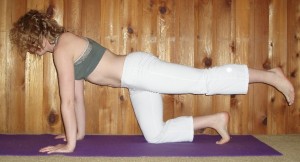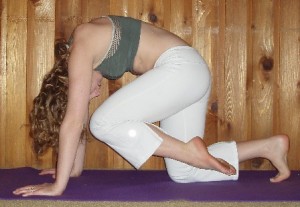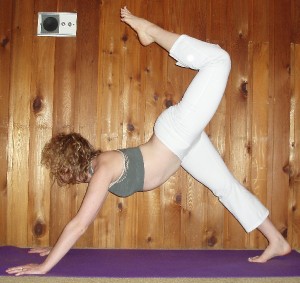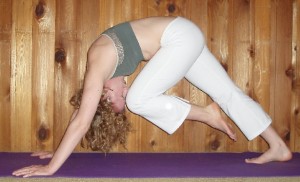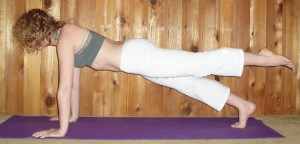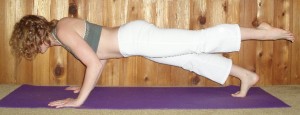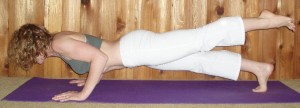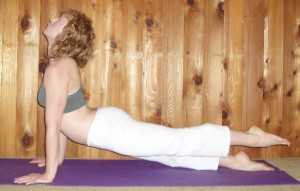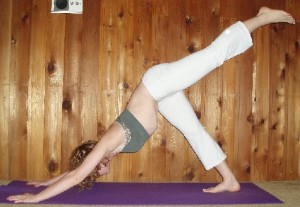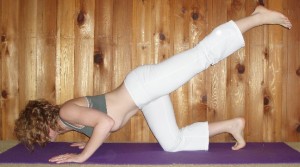In vinyasa or hatha flow classes, the magic comes as much from how you sequence the poses as from the poses themselves. I picked up this flow from Elizabeth, one of my favourite teachers in San Francisco. To get the full benefit of the postures, make sure to hold each one for three to five breaths.
Start in triangle pose (trikonasana), making sure both sides of the torso (even the bottom side) are long. You can look down, to the side, or up, but really extend forward through the crown of the head. Think about rolling your top hip back. Breathe.
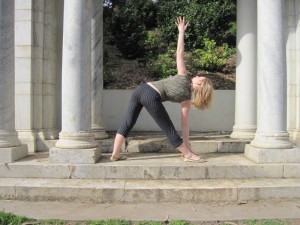
Start in triangle pose.
Prepare for revolved triangle (Parivrtta Trikonasana). As you exhale, bring the top hand to the ground or a block. As you inhale, take the other hand to the hip or extend it skyward, revolving the chest toward the front inner thigh. Keep both sides of the torso long. The head can look down, forward, or up. Breathe here.
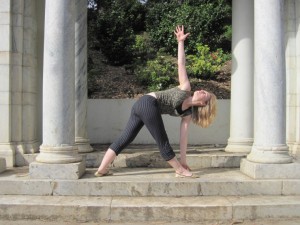
As you exhale, bring the top hand down to the ground or a block. As you inhale, extend into revolved triangle.
Prepare for revolved half moon (Parivrtta Ardha Chandrasana). Slightly bend the front knee and begin to shift the weight forward. Contract the abdominals and as you inhale, lift the back foot off the ground.
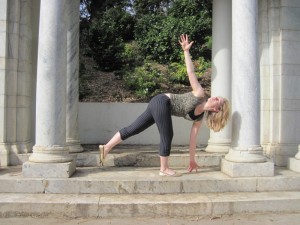
As you inhale, begin to lift into revolved half moon.
Keep the torso revolved; eventually the front of the chest may be completely perpendicular to the ground. The bottom hand can be on the floor or on a block, and the top hand can be on the top hip, or extended skyward. Try to get the back leg parallel to the ground with the foot flexed. Breathe.
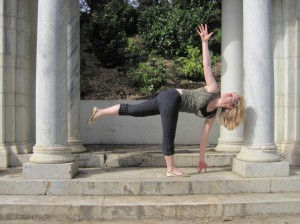
Revolved half moon.
Prepare to transition to sitting. Contract your abdominal muscles, and as you exhale, bend into both knees. Bring the top knee behind of the bottom ankle, and sit down between the feet.
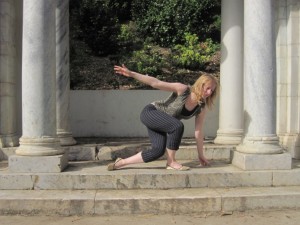
As you exhale, transition from revolved half moon to a seated preparation for half twist.
Make sure both sit bones are rooted, preparing for half twist (Ardha Matsyendrasana). As you exhale, turn the chest toward the top knee and place the back hand behind you. Inhale extend the other hand skyward, and then take the hand or elbow to the knee.
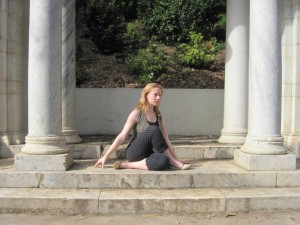
Prepare for half twist.
As you inhale lengthen upwards through the spine, as you exhale twist. Don’t only think about turning the head and eyes back, think about rotating the whole chest. Breathe here.
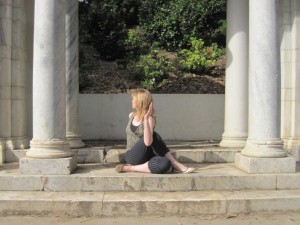
Inhale lengthen upwards through the spine, exhale twist.
As you inhale, return the torso back to neutral, and prepare to return to a standing balance. Ground down through the foot of the top leg. Contract the abdominals, and as you inhale, begin to straighten that top leg leg and lift the other leg off the ground.
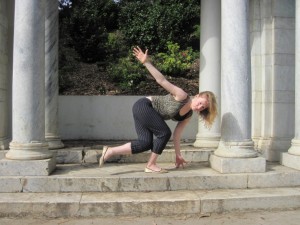
Inhale, return to standing.
Transition into standing splits (Urdhva Prasarita Eka Padasana). It’s tempting to roll one hip higher than the other, but try to keep the hips square to the floor. As you inhale, lift the back leg up as high as possible while keeping the hips in alignment. If you have the flexibility, as you exhale, draw the chest in toward the quadriceps (front on the thigh). The hand can be on a block or on the floor, or you can have one hand or both grasping the ankle to challenge balance. Make sure to keep breathing.
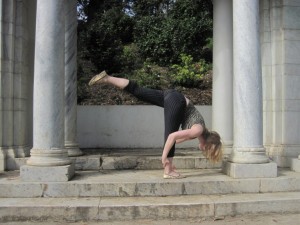
Inhale, lift the back leg upwards. Exhale, gently pull the chest in toward the thigh.
I’ll let you decide where to go from here, but make sure you make your way to the other side to balance it out. For example, in a vinyasa class you could release half splits into a forward fold, step/hop back to chuttarunga and cycle through a vinyasa (upward facing dog, downward facing dog). From downward dog, you could then step forward into a lunge, giving you an easy transition into triangle pose on the other side. For the most balanced overall routine, you should make sure to enter triangle in the same way on both sides.
